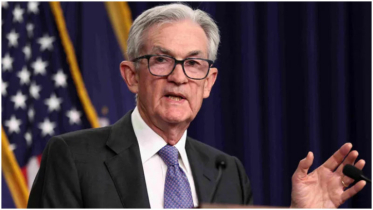‘Surprisingly resilient': IMF lifts global growth forecasts

The International Monetary Fund (IMF) has raised its 2023 global growth outlook slightly due to “surprisingly resilient” demand in the United States and Europe and the reopening of China’s economy after Beijing abandoned its strict zero-COVID strategy, Al Jazeera reports.
The IMF said global growth would still fall to 2.9% this year from 3.4% in 2022, but its latest World Economic Outlook forecasts mark an improvement over an October prediction of 2.7% growth this year, with warnings that the world could easily tip into recession.
For 2024, the IMF said global growth would accelerate slightly to 3.1%, but interest rate hikes by central banks around the world would slow demand.
IMF chief economist Pierre-Olivier Gourinchas said recession risks had subsided and central banks were making progress in controlling inflation, but more work was needed to curb prices, and new disruptions could come from further escalation of the war in Ukraine and China’s battle against COVID-19.
“We have to sort of be prepared to expect the unexpected, but it could well represent a turning point, with growth bottoming out and then inflation declining,” Gourinchas told reporters of the 2023 outlook.
Strong demand
In its 2023 gross domestic product (GDP) forecasts, the IMF said it now expected GDP growth in the US of 1.4%, up from the 1.0% predicted in October and following 2.0% growth in 2022.
The fund cited stronger-than-expected consumption and investment in the third quarter of 2022, a robust labour market and strong consumer balance sheets.
It said the eurozone had made similar gains, with 2023 growth for the bloc now forecast at 0.7%, compared with 0.5% in the October outlook, following 3.5% growth in 2022. The IMF said Europe had adapted to higher energy costs more quickly than expected, and an easing of energy prices had helped the region.
The United Kingdom was the only major advanced economy the IMF predicted to be in recession this year.
It forecast the British economy to shrink 0.6% in 2023, compared with a previous expectation for growth of 0.3%. People are struggling with higher interest rates, and government moves to further tighten spending are also squeezing growth, it said.
“These figures confirm we are not immune to the pressures hitting nearly all advanced economies,’’ Chancellor of the Exchequer Jeremy Hunt said in response to the IMF forecast. “Short-term challenges should not obscure our long-term prospects — the UK outperformed many forecasts last year, and if we stick to our plan to halve inflation, the UK is still predicted to grow faster than Germany and Japan over the coming years.”
China reopens
The IMF revised China’s growth outlook sharply higher for 2023, to 5.2% from 4.4% in the October forecast after its ‘zero-COVID’ strategy held back the economy. China’s growth rate was 3.0% in 2022, below the global average for the first time in more than 40 years.
Still, the fund added that China’s growth will “fall to 4.5% in 2024 before settling at below 4% over the medium term amid declining business dynamism and slow progress on structural reforms”.
At the same time, it maintained India’s outlook for a dip in 2023 growth to 6.1% but a rebound to 6.8% in 2024, matching its 2022 performance.
Gourinchas said together, the two Asian powerhouse economies will contribute more than 50% of global growth in 2023.
He acknowledged that China’s reopening would put some upward pressure on commodity prices, but “on balance, I think we view the reopening of China as a benefit to the global economy” as it will help ease production bottlenecks that have worsened inflation and by creating more demand from Chinese households.
Even with China’s reopening, the IMF is predicting that oil prices will fall in both 2023 and 2024 due to lower global growth compared with 2022.
Risks
The IMF said there were both upside and downside risks to the outlook, with built-up savings creating the possibility of sustained demand growth, particularly for tourism, and an easing of labour market pressures in some advanced economies helping to cool inflation, lessening the need for aggressive rate hikes.
But it detailed more and larger downside risks, including more widespread COVID-19 outbreaks in China and a worsening of the country’s property turmoil.
An escalation of the war in Ukraine could lead to a further spike in energy and food prices, as would a cold northern winter next year as Europe struggles to refill gas storage and competes with China for liquefied natural gas supplies, the fund said.
Gourinchas said central banks need to stay vigilant and be more certain that inflation is on a downward path, particularly in countries where real interest rates remain low, such as in Europe.
“So we’re just saying, look, bring monetary policy slightly above neutral at the very least and hold it there. And then assess what’s going on with price dynamics and how the economy is responding, and there will be plenty of time to adjust course, so that we avoid having overtightening,” Gourinchas said.
.png)




